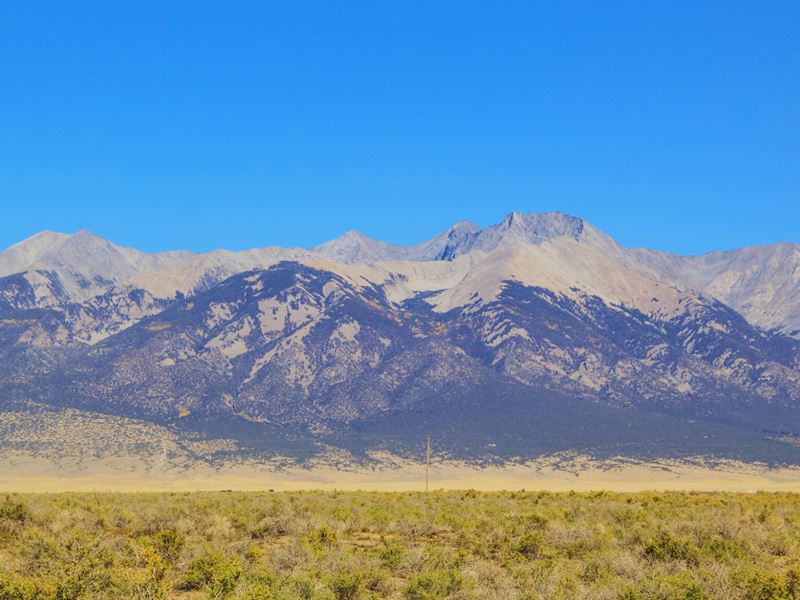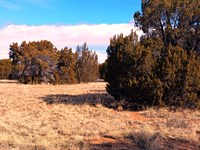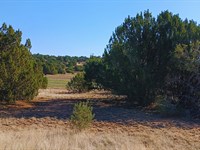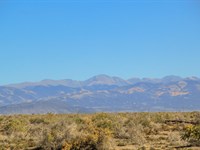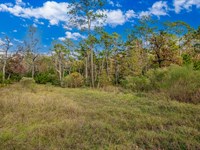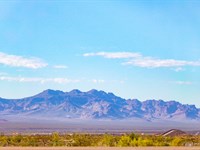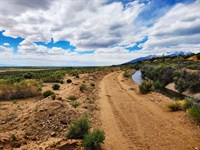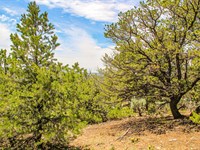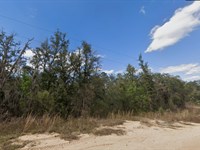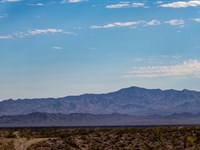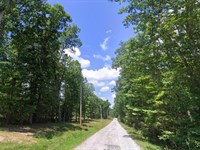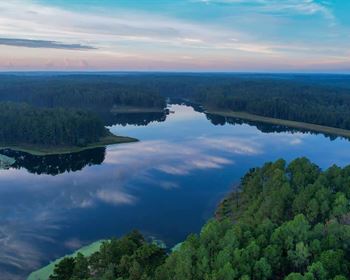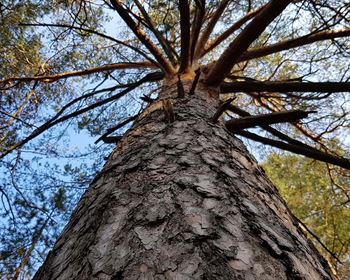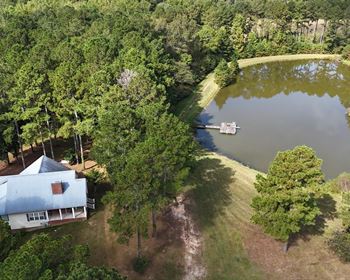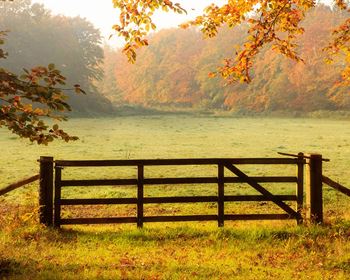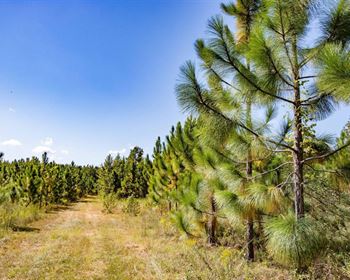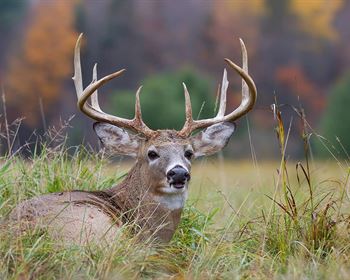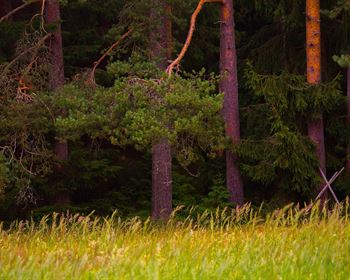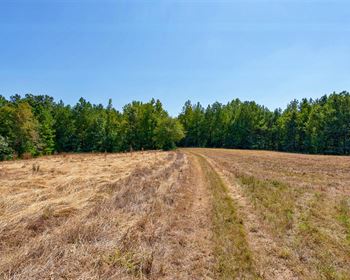Freedom Lot with Easy Access
Garnet Ln : Alamosa, CO 81101
Alamosa County, Colorado
Land Description
This property is an acre of wide-open Colorado land where the San Luis Valley stretches out in every direction. This 1.25-Acre property in Deer Valley Meadows gives you the freedom to build your dream-whether that's a traditional home, a modern tiny house, or a setup for extended RV living. Power lines run nearby, and you'll find easy access via maintained dirt roads that won't leave you wrestling with rough terrain every time you visit.
The location puts you right in the heart of outdoor country. The Alamosa National Wildlife Refuge sits close by, offering thousands of acres for wildlife watching, hiking, and experiencing Colorado's natural beauty. This is high desert territory where the air is crisp, the skies go on forever, and you can actually see the stars at night. Whether you're into photography, birdwatching, or just need space to breathe, this area delivers.
This property works for your plans, not the other way around. Want to park an RV while you figure things out? You can do that. Ready to build small and live simply? That works too. Need room for a full-sized home? You've got it. With no HOA telling you what you can and can't do, you're free to create the Colorado lifestyle you've been thinking about. The land is ready-now it's your move.
Information presented in this listing is deemed accurate but is not guaranteed. Buyers are advised to conduct their own due diligence and verify all details independently.
---
Location And Setting Overview
- Gateway to the San Luis Valley: Your 1.25-Acre property sits in Deer Valley Meadows, positioned perfectly on the valley floor at 7,585 feet elevation where the San Luis Valley opens wide under big Colorado skies. This is authentic high desert country where you can see for miles in every direction, with the Sangre de Cristo Mountains rising dramatically to the east and the San Juan Mountains standing guard to the west. Located just 10 miles east of Alamosa on Highway 160, you get easy paved road access to your property while maintaining that sense of distance and privacy that drew you to Colorado in the first place.
- The San Luis Valley Advantage: You're living in North America's largest alpine valley, spanning over 100 miles north to south and 50 miles east to west. At 7,500 to 7,800 feet elevation, this high mountain desert basin sits surrounded by some of Colorado's most impressive peaks. The valley itself covers roughly 8,000 square miles, making it larger than the state of Connecticut. This massive geographic feature creates its own weather patterns, resulting in over 300 sunny days annually with minimal humidity and moderate temperatures that make outdoor living comfortable year-round.
- Strategic Location Benefits: Deer Valley Meadows puts you 10 miles from downtown Alamosa, the commercial and cultural hub of the San Luis Valley. This means you're close enough to run into town for supplies, medical appointments, or a meal out, but far enough to enjoy genuine rural living without city noise or light pollution. Highway 160 provides direct paved access, making your commute straightforward even in winter weather. The subdivision itself features maintained dirt roads that standard vehicles can navigate in good weather, though high-clearance or four-wheel-drive vehicles provide extra confidence during spring mud season or after heavy snows.
- Mountain Views That Command Attention: From your property, Mount Blanca dominates the eastern horizon at 14,345 feet elevation. This is Colorado's fourth-highest peak and the most prominent mountain in the Sangre de Cristo Range. On clear mornings, you'll watch the sun illuminate Blanca's snow-covered slopes in shades of pink and gold. By evening, the entire range glows crimson red in what Spanish explorers called "Sangre de Cristo" - Blood of Christ - giving the mountains their name. These aren't distant peaks you squint to see; they're massive formations that fill your view and remind you daily why you chose mountain country.
- Alamosa: Your Full-Service Town: The city of Alamosa serves as your supply center, offering everything from grocery shopping to medical care within a 15-minute drive. With a population around 9,000, Alamosa provides genuine small-town friendliness while delivering the services you need. You'll find a Walmart Supercenter at 3333 Clark Street for one-stop shopping, plus Safeway and other grocers for weekly supplies. Hardware needs get handled at local building supply stores where staff actually know the products and your projects. Banking, post office, gas stations, restaurants ranging from fast food to sit-down dining, auto repair shops, and professional services all operate within Alamosa's compact downtown and commercial strips.
- Medical Services Close By: San Luis Valley Regional Medical Center anchors Alamosa's healthcare system with a 57-bed Level IV trauma center providing emergency services, surgical facilities, and specialized care. Valley-Wide Health Systems operates multiple clinics throughout the region, including their main office at 128 Market Street in Alamosa, offering family medicine, internal medicine, dental services, and pharmacy. For everyday medical needs, the Convenient Care Community Clinic provides walk-in services seven days a week with extended hours. Veterans receive care through the Alamosa VA Clinic. These facilities ensure you're never far from medical attention, with emergency response coordinated through Alamosa County's 911 dispatch system.
- Regional Recreation Hub: Alamosa serves as the gateway to major recreational destinations throughout southern Colorado. Great Sand Dunes National Park sits 30 miles northeast, drawing over 500,000 visitors annually to see North America's tallest dunes rising 750 feet above the valley floor. Wolf Creek Ski Area, famous for receiving over 400 inches of annual snowfall, lies about two hours west. The Rio Grande River flows just minutes from Deer Valley Meadows, offering fishing access and riparian habitat exploration. Your location puts you within day-trip distance of numerous wilderness areas, mountain peaks, hot springs, and historic sites that keep weekends interesting year-round.
- Climate Realities: The San Luis Valley experiences four distinct seasons with characteristics you should understand before buying. Summers bring daytime highs in the mid-70s to low 80s Fahrenheit, with cool nights dropping into the 40s - comfortable sleeping weather without air conditioning. Winters see daytime highs around 30-35 degrees with nighttime temperatures often below zero, though the dry air and intense sunshine make cold days feel more tolerable than humid climates. Annual precipitation averages only 8-10 inches, with most falling as snow between November and March. This semi-arid climate means you'll enjoy those 300+ sunny days, but you'll also need to plan water resources carefully for any gardens or landscaping.
---
Recreational Opportunities
- Alamosa National Wildlife Refuge: Located just a few miles from your property, the 12,026-Acre Alamosa National Wildlife Refuge delivers world-class wildlife viewing and outdoor experiences literally in your backyard. Established in 1963 to protect migratory bird habitat, the refuge conserves wetlands, riparian corridors, wet meadows, and river oxbows within the Rio Grande floodplain. Over 200 bird species use these habitats throughout the year, making this one of Colorado's premier birding destinations. The refuge opens one hour before sunrise to one hour after sunset, giving early risers and evening wanderers maximum access to witness wildlife in their most active periods.
- Wildlife Drive and Trail Systems: The refuge features a 3-mile Wildlife Drive open year-round to automobiles, bicycles, foot traffic, and horseback riders. This loop road winds through diverse habitats where you'll encounter wetlands teeming with waterfowl, dry uplands supporting raptors and mammals, and riparian zones where songbirds flourish. The Rio Grande Nature Trail offers a 4-mile out-and-back hiking experience along the river through multiple ecosystems, though it closes seasonally from April 15 to September 1 to protect the federally endangered southwestern willow flycatcher during nesting season. The 2-mile Bluff Nature Trail provides elevated views across the floodplain with the Sangre de Cristo Mountains creating a stunning backdrop. Winter visitors can cross-country ski or snowshoe these trails when snow conditions permit.
- Sandhill Crane Migrations: Twice annually, the San Luis Valley hosts one of North America's most spectacular wildlife events. Around mid-March and mid-October, tens of thousands of sandhill cranes migrate through the valley, with many stopping at the wildlife refuges. These prehistoric-looking birds, standing up to four feet tall with six-foot wingspans, gather in massive flocks that darken the sky. Their distinctive rattling calls echo across the valley at dawn and dusk as they fly between feeding and roosting areas. The Monte Vista Crane Festival, held each March in nearby Monte Vista, celebrates this migration with guided tours, educational programs, and photography workshops. Living near the refuge means you experience these migrations from your own property without fighting festival crowds.
- Year-Round Bird Watching: Beyond the famous crane migrations, the refuge supports an incredible diversity of bird species throughout all seasons. Waterfowl including mallards, pintails, teals, and Canada geese use the wetlands for feeding and nesting. Wading birds like great blue herons, snowy egrets, white-faced ibises, and American avocets stalk the shallows. Raptors patrol the skies and perch in riverside cottonwoods - red-tailed hawks, Swainson's hawks, American kestrels, golden eagles, and bald eagles all hunt these productive habitats. Winter brings rough-legged hawks from Arctic breeding grounds. Songbirds fill the riparian corridors during migration seasons, with warblers, sparrows, and flycatchers moving through by the thousands. Serious birders regularly record over 100 species in a single day during peak migration periods.
- Hunting Opportunities on the Refuge: The Alamosa National Wildlife Refuge opens portions of its acreage to hunting, following the most restrictive local, state, and federal regulations. Waterfowl hunting ranks among Colorado's best here, particularly early in the season when ducks and geese concentrate along the Rio Grande and in managed wetlands. By late October and November, hunting pressure and weather push birds into refuge areas, creating excellent shooting opportunities for hunters who understand the patterns. Upland game hunting for species like mourning doves also occurs during designated seasons. All hunting requires appropriate licenses and refuge permits, with specific areas open and closed clearly marked. This public hunting access adds value for sportsmen who want quality hunting experiences without paying for private leases.
- Fishing Access via the Rio Grande: The Rio Grande River forms the western boundary of the refuge and flows within easy reach of Deer Valley Meadows. This legendary waterway provides fishing opportunities for multiple trout species, including rainbow trout, brown trout, and the native Rio Grande cutthroat trout. While much of the best fishing occurs upstream in the San Juan Mountains where the river originates, valley sections still hold fish and offer peaceful fishing experiences away from crowded mountain streams. The river also supports warm-water species in slower sections. Fishing access exists at various public points, and the refuge allows fishing near Chicago Dam on Alamosa National Wildlife Refuge, though seasonal closures protect nesting birds in sensitive areas.
- Hiking and Nature Photography: The refuge trails provide outstanding photography opportunities throughout the year. Early morning and late evening light create magical conditions for capturing wildlife against mountain backdrops. Spring wildflowers add color to meadows and wetlands. Summer brings young birds and mammals learning survival skills. Autumn delivers golden cottonwood leaves contrasting with blue skies and snow-dusted peaks. Winter landscapes transform into stark black-and-white compositions broken by wildlife movement. The refuge's flat, accessible trails accommodate photographers of all mobility levels, while patient observers can set up blinds or wait quietly for animals to approach within camera range. Professional and amateur photographers regularly capture award-winning images here without traveling to remote wilderness areas.
- Great Sand Dunes National Park: Thirty miles northeast of your property, Great Sand Dunes National Park preserves the tallest sand dunes in North America. These massive dunes rise 750 feet above the valley floor, created by sand particles swept by prevailing winds against the base of the Sangre de Cristo Mountains over thousands of years. Visitors sandboard and sand sled down steep dune faces, creating a unique Colorado experience that feels more like the Sahara than the Rockies. During late spring and early summer, snowmelt from the mountains creates Medano Creek, which flows at the base of the dunes creating a seasonal beach where families wade and play. Hiking the dunes provides a serious workout - the soft sand makes every step challenging - but reaching the ridgelines delivers 360-Degree views across the valley that justify the effort.
- Mountain Recreation Access: Living in Deer Valley Meadows places you within striking distance of Colorado's legendary mountain recreation. The Sangre de Cristo Wilderness Area offers over 220,000 acres of pristine backcountry with numerous 13,000 and 14,000-Foot peaks accessible via established trails. Day hikers can tackle shorter peaks and alpine lakes, while backpackers can venture deep into the range for multi-day adventures. Rock climbing routes range from beginner-friendly sport climbs to serious alpine mountaineering requiring technical skills and equipment. Mountain biking trails crisscross national forest lands, with everything from gentle forest roads to challenging singletrack. In winter, backcountry skiers and snowboarders access untouched powder bowls, though avalanche education and safety equipment are essential for anyone venturing into winter mountain terrain.
---
Wildlife And Hunting
- Mule Deer and Elk Populations: Deer Valley Meadows sits within Game Management Unit 66, which encompasses much of Alamosa County and provides solid hunting opportunities for both mule deer and Rocky Mountain elk. Mule deer thrive in the valley's mixed habitat of agricultural lands, sagebrush flats, and pinyon-juniper foothills. You'll regularly spot deer from your property during dawn and dusk feeding periods, with larger bucks often visible during the November rut when they're less cautious. Elk migrate through the valley seasonally, with herds moving between summer range in the high mountains and winter range on the valley floor and foothills. While elk numbers in Unit 66 don't match the legendary concentrations found in other Colorado units, resident elk herds exist and migratory herds pass through, providing hunting and viewing opportunities.
- Pronghorn Antelope Territory: The San Luis Valley supports one of Colorado's healthiest pronghorn populations, and Deer Valley Meadows sits in prime antelope country. These remarkable animals, North America's fastest land mammals capable of sustained speeds over 50 mph, roam the open grasslands and sagebrush flats in herds ranging from a few animals to several dozen. Pronghorn hunting in this area offers unique challenges - their exceptional eyesight spots movement from miles away, and their speed makes pursuit futile. Successful hunters use terrain features for concealment, set up near water sources, or employ long-range shooting skills. Pronghorn licenses for this area often have reasonable draw odds compared to more famous units, making it accessible for hunters wanting to pursue these beautiful animals. Even non-hunters appreciate watching pronghorn bands racing across the valley in full sprint, a sight that connects observers to the wild character of the American West.
- Waterfowl and Upland Game Birds: The proximity to Alamosa National Wildlife Refuge creates excellent waterfowl hunting opportunities during fall migrations. Ducks and geese concentrate in massive numbers throughout the valley's agricultural fields, wetlands, and along the Rio Grande. Species include mallards, pintails, gadwalls, wigeons, teal, Canada geese, and occasional snow geese. Hunting pressure on public refuge lands can be intense, but private agricultural lands throughout the valley often welcome respectful hunters who ask permission. Mourning doves migrate through in substantial numbers, providing exciting pass-shooting during September seasons. The valley lacks extensive populations of traditional upland game birds like pheasants and quail, but dedicated hunters can find mourning doves and occasional Eurasian collared doves in agricultural areas and near shelter belts.
- Small Game Abundance: Cottontail rabbits populate the brushy areas, shelter belts, and edges throughout Deer Valley Meadows and surrounding properties. These prolific rabbits provide excellent small game hunting for beginners, youth hunters, and anyone wanting to keep hunting skills sharp during off-seasons for big game. Colorado allows generous bag limits and long seasons on cottontails, and they're present in huntable numbers year-round. Jackrabbits, technically hares rather than rabbits, bound through the more open sagebrush areas. Their large size and impressive speed make them challenging targets. Both species provide opportunities for hunters with shotguns or.22 rifles, and rabbit hunting requires no special draw - just a small game license and respect for property boundaries.
- Raptor Viewing Paradise: The San Luis Valley's combination of open terrain and abundant prey creates ideal raptor habitat visible from your property daily. Golden eagles patrol overhead, their massive seven-foot wingspans unmistakable as they soar on thermals scanning for rabbits and prairie dogs. Bald eagles concentrate along the Rio Grande during winter months, fishing for trout and scavenging. Red-tailed hawks perch on fence posts and power poles, the most common raptor you'll encounter. Swainson's hawks arrive in summer, their distinctive white chests and dark flight feathers visible as they course over fields hunting insects and rodents. American kestrels, North America's smallest falcon, hover above roadsides watching for prey. During winter, rough-legged hawks arrive from Arctic breeding grounds, their feathered legs identifying them. Prairie falcons occasionally streak through at high speeds pursuing birds. Great horned owls hoot at night, and you might spot them roosting in junipers during daylight.
- Mammal Diversity Beyond Game Species: Your property and surrounding areas support diverse mammal populations beyond hunted game animals. Black-tailed prairie dogs establish colonies in suitable areas, their sentinel system creating constant entertainment as they warn each other of approaching threats with distinctive barks. Badgers dig impressive burrows hunting for prairie dogs and ground squirrels. Long-tailed weasels in summer brown and winter white hunt rodents through brush and rock piles. Bobcats prowl at dawn and dusk, though their secretive nature makes sightings rare. Desert cottontails and black-tailed jackrabbits provide prey for the predators and hunting opportunities for humans. Beaver work the Rio Grande and irrigation ditches, their engineering projects creating ponds and channels that enhance wildlife habitat. Porcupines occasionally appear, especially in areas with trees they climb for bark and buds. Even occasional black bears wander down from mountain habitats, though sightings are uncommon this far from the peaks.
- Bird Life Beyond Game Species: The San Luis Valley's position along major migratory flyways creates incredible birding diversity. Beyond the famous sandhill cranes and waterfowl, over 300 bird species have been documented in the valley. Songbird migrations during spring and fall bring waves of warblers, sparrows, flycatchers, and other passerines moving through riparian corridors. Mountain bluebirds flash electric blue against sagebrush. Western meadowlarks deliver their distinctive song from fence posts marking territory. Horned larks run through short grass fields. Say's phoebes hawk insects from ranch buildings. During winter, rosy-finches descend from alpine tundra, and occasional snowy owls arrive during irruption years, creating excitement among birders. The variety ensures something new to observe throughout the year, whether you're a serious birder or simply appreciate nature's diversity.
- Responsible Hunting and Wildlife Ethics: Living in Deer Valley Meadows means joining a community where hunting and wildlife appreciation coexist. Colorado's hunting culture emphasizes ethical behavior, fair chase, and respect for both wildlife and landowners. If you hunt, you'll want to understand Colorado Parks and Wildlife regulations thoroughly, secure proper licenses and permits, respect property boundaries religiously, and practice Leave No Trace principles. Most importantly, ask permission before hunting private lands, and offer to help landowners with chores or maintenance as thanks for access. Many valley landowners welcome respectful hunters, especially those hunting predators or helping control animals causing crop damage. Building relationships with neighbors often leads to hunting invitations and mutual support that enriches the rural living experience.
---
Historical Significance
- Where Colorado Began: The San Luis Valley holds the distinction of hosting Colorado's first permanent European settlements, established decades before the gold rush brought prospectors to Cherry Creek and the Front Range. In 1851, Hispanic settlers from northern New Mexico founded San Luis along the Culebra River, creating what remains Colorado's oldest continuously occupied town. These pioneers built their homes and farms under Mexican land grants that the Treaty of Guadalupe Hidalgo had promised to honor when the United States acquired this territory in 1848. Your property in Deer Valley Meadows sits within this historically significant landscape where Spanish-speaking settlers established Colorado's agricultural foundations and cultural traditions that continue shaping the valley today.
- Native American Heritage: Long before European explorers arrived, the San Luis Valley served as homeland and hunting ground for multiple Native American tribes. The Ute people established the strongest presence, with three distinct bands - the Tabeguache, Muache, and Capote - using the valley for summer hunting and gathering while retreating to lower elevations during harsh winters. Archaeological evidence indicates human habitation dating back over 11,000 years to Paleo-Indian Clovis and Folsom cultures who hunted mammoths and other Ice Age megafauna. The Jicarilla Apache, Comanche, Kiowa, Navajo, Arapaho, and Cheyenne all traversed this landscape at various times, drawn by abundant game, water resources, and the natural corridor the valley provided through the Rocky Mountains. These diverse peoples left behind artifacts, petroglyphs, and place names that connect modern residents to thousands of years of human experience in this dramatic landscape.
- Spanish Colonial Exploration: Spanish explorers penetrated the San Luis Valley as early as the 16th century, with expeditions led by Juan de Oñate, Juan Maria Rivera, and Juan Bautista de Anza passing through the region between the 1500S and 1700S. These expeditions sought trade routes, missionary opportunities, and knowledge of the northern reaches of New Spain's territories. The Spanish explorers named the Sangre de Cristo Mountains - Blood of Christ - for the crimson alpenglow that illuminates the peaks at sunrise and sunset. Spanish colonial influence extended into the valley through the Old Spanish Trail, a trade route connecting Santa Fe with California that passed through the San Luis Valley, bringing traders, missionaries, and explorers who documented the region's geography and resources centuries before American settlement.
- Mexican Land Grants and Settlement: Following Mexican independence from Spain in 1821, the new Mexican government sought to strengthen its hold on northern territories by encouraging settlement through land grants. In 1843, the government of New Mexico created the Sangre de Cristo Land Grant, consisting of roughly one million acres in the southern San Luis Valley, and granted it to the family of Carlos Beaubien. The Conejos Grant followed, encompassing portions of present-day Conejos, Rio Grande, and Saguache Counties. These grants promised settlers access to farmland, grazing rights, water resources, and timber, creating the legal framework for permanent Hispanic settlement. When the Treaty of Guadalupe Hidalgo transferred this territory to the United States in 1848, it promised to respect the language, religion, and property rights of Mexican citizens living in the newly acquired lands, though enforcement of these promises proved inconsistent.
- Fort Garland and Military History: In 1852, the U.S. Army established Fort Massachusetts north of San Luis to protect settlers and assert American control over the newly acquired territory. The fort proved poorly positioned and difficult to supply, leading to construction of Fort Garland in 1858 at the base of Mount Blanca. Fort Garland became an important military post on Colorado's southern frontier, with soldiers patrolling the valley to protect settlers, maintain roads, and mediate conflicts with Ute tribes who understandably resented losing their ancestral lands. Kit Carson, already legendary as a frontiersman and scout, commanded Fort Garland from 1866 to 1867, using his knowledge of Native peoples to negotiate peaceful resolutions when possible. The fort also housed the Buffalo Soldiers - African American cavalry troops of the 9th Cavalry - who served with distinction despite facing discrimination both in military service and civilian life. Today, Fort Garland Museum preserves this military history just 25 miles from your property, offering exhibits that honestly address the complex relationships between Hispanic settlers, Native peoples, African American soldiers, and Anglo newcomers.
- Mining Boom and Ghost Towns: While the San Luis Valley never experienced gold rush frenzy on the scale of Leadville or Cripple Creek, significant mining operations developed in the surrounding mountains during the late 1800S and early 1900S. Summitville, located in the mountains west of the valley, produced substantial gold deposits and rivaled Pike's Peak in fame during its boom years. Silver mines in the Sangre de Cristo Mountains and San Juan Mountains drew prospectors, miners, and support industries. Mining camps sprouted throughout the high country, with supply towns developing on the valley floor to serve these operations. Many camps eventually became ghost towns when ore played out or metal prices collapsed, leaving fascinating ruins visible today. The Banded Peak Ranch manages the Gramps Oil Field, discovered in 1935, which has produced over five million barrels of oil, demonstrating that the valley's mineral wealth extended beyond precious metals.
- Hispanic Cultural Preservation: Unlike many Western regions where Anglo settlement overwhelmed earlier Hispanic populations, the San Luis Valley maintained strong Spanish-speaking communities that preserved language, traditions, and cultural practices across generations. Today, the San Luis Valley contains Colorado's largest native Hispanic population, with many families directly descended from the original 1850S settlers. Traditional acequia irrigation systems still function, distributing water according to centuries-old principles. Religious festivals, folk arts, traditional foods, and distinctive Spanish dialects unique to northern New Mexico and southern Colorado continue thriving. Organizations like the Sociedad Protección Mutua de Trabajadores Unidos, founded in the late 1800S to protect Hispanic land and water rights, still operate today, making it one of America's oldest Latino civil rights organizations. This cultural continuity makes the San Luis Valley unique in Colorado, preserving living connections to pre-statehood heritage.
- Agricultural Development and Water Resources: The San Luis Valley evolved into one of Colorado's most productive agricultural regions, famous for potatoes, hay, barley, and livestock. The valley's 100-Mile length and 50-mile width encompass vast acreages of fertile soil, while surrounding mountain ranges provide reliable water through snowmelt. Early settlers developed sophisticated irrigation systems based on Spanish acequia traditions, later expanded with canals, ditches, and reservoirs serving thousands of farms and ranches. Center-pivot irrigation systems now create the distinctive crop circles visible from aircraft, producing commercial quantities of potatoes that supply national markets, plus barley for brewing, alfalfa for livestock feed, and various specialty crops. Groundwater from the massive aquifer beneath the valley floor supplements surface water, though sustainable management remains essential. This agricultural heritage continues defining the valley economy and landscape, with working farms and ranches surrounding residential areas like Deer Valley Meadows.
---
Building And Development Options
- Residential Manufactured Home Zoning Explained: Your 1.25-Acre property carries Residential Manufactured Home zoning, giving you specific development rights designed for manufactured home placement while also permitting traditional construction methods. This zoning category provides significant flexibility for buyers seeking affordable housing options without sacrificing quality of life. Understanding the specific regulations helps you plan your development approach, whether you're thinking about a manufactured home, traditional site-built construction, or alternative building methods that meet county standards. Alamosa County Building Department staff at provide guidance and answer questions about specific building plans before you commit resources to development.
- Minimum House Size and Building Requirements: Alamosa County requires a minimum of 500 square feet for residential purposes, making tiny home construction entirely feasible on this property. This modest threshold opens possibilities for budget-conscious buyers, retirees seeking simplified living, or those embracing the tiny house movement without artificial barriers. For comparison, a 500-Square-Foot home provides comfortable living space equivalent to a large studio apartment or small one-bedroom, with careful design creating surprisingly functional layouts. You can build larger naturally - most buyers construct homes between 800 and 2,000 square feet - but the low minimum ensures affordable entry into Colorado property ownership. This requirement applies only to the primary dwelling, with accessory structures like sheds, workshops, and garages having separate regulations requiring permits for structures over 200 square feet.
- Manufactured and Modular Home Options: Alamosa County welcomes manufactured homes within specific guidelines designed to ensure quality and permanence. Single-section manufactured homes, commonly called single-wides, must not be older than 15 years and are specifically allowed in the Residential Manufactured Home zoning district where your property sits. Multi-section manufactured homes, double-wides or larger, must be built in 1976 or newer, the year federal HUD construction standards took effect ensuring safety and durability. All manufactured homes must sit on permanent foundations rather than temporary supports, requiring foundation drawings stamped by a Colorado licensed engineer. This permanent foundation requirement prevents mobile homes from being treated as temporary structures, protecting property values and ensuring developments meet safety standards. Manufactured homes offer significant cost advantages compared to traditional construction, with quality modern manufactured homes featuring amenities, layouts, and finishes comparable to site-built homes at roughly half the cost.
- Site-Built Construction Flexibility: Traditional site-built homes follow standard residential construction codes using the 2018 International Residential Code adopted by Alamosa County. You can build using any construction method meeting these codes - conventional stick-framing with dimensional lumber, timber framing with exposed beams, structural insulated panels for superior insulation, concrete construction for durability, or any other approach passing inspection. Alamosa County allows alternative building methods including earthships, straw bale construction, shipping container homes, and rammed earth walls, provided plans receive approval stamped by a licensed Colorado architect or engineer. This openness to innovative construction encourages sustainable building practices and creative architectural solutions while maintaining safety standards. The seven-business-day minimum review period for residential building plans provides reasonable turnaround without excessive delays.
- Accessory Structure Possibilities: Beyond your primary residence, you can build unlimited accessory structures supporting your property use and lifestyle. Common accessory buildings include detached garages protecting vehicles from weather, workshops for hobbies and projects, storage sheds organizing tools and equipment, barns housing animals and feed, greenhouses extending growing seasons, studios providing creative workspace, and guest quarters hosting visitors. Structures over 200 square feet require building permits, while smaller sheds and outbuildings often proceed without formal permitting. Many property owners build accessory structures first, providing secure storage during home construction and establishing infrastructure before tackling the main residence. This staged approach spreads costs over time and lets you test living on the property through camping or RV occupation while planning permanent structures.
- RV and Camping Regulations: Alamosa County understands that many buyers want to use their land immediately, even before building permanent structures. The county permits various camping and RV arrangements giving you flexibility to enjoy your property from day one. Short-term camping without any permit is allowed, letting you spend weekends or vacations on your land exploring the area and planning development. For extended stays, particularly during construction, you can obtain permits allowing RV or camper placement for specified periods. These arrangements require basic sanitation provisions preventing environmental contamination - typically a holding tank system or connection to a septic system if already installed. Many owner-builders live in RVs on their properties during construction, saving rental costs while overseeing work daily. Contact the Alamosa County Land Use and Building Department to understand current camping permit requirements and durations, as these regulations may adjust based on county needs and experiences.
- Water System Development: Every occupied structure requires a legal water source, typically achieved through drilling a domestic well on your property. Average well depths in Deer Valley Meadows range from 60 to 100 feet, significantly shallower than many Colorado locations due to the valley's substantial groundwater aquifer fed by mountain snowmelt. Well drilling costs approximately $35 per foot plus equipment and casing expenses, meaning most wells cost between $5,000 and $12,000 depending on depth and specific site conditions. The Colorado Division of Water Resources issues well permits for domestic use, allowing household water needs plus limited outdoor watering. Wells this deep typically produce excellent quality water requiring minimal treatment. Alternative water systems include cisterns holding 500 to 2,000 gallons filled by water delivery services, with Alamosa Water Department offering very affordable water sales for hauling. Some property owners combine systems, using cisterns initially while saving for well drilling, or maintaining cisterns as backup water sources ensuring supply during pump failures or other emergencies.
- Septic System Installation: Without municipal sewer service, you'll need an onsite wastewater treatment system handling household sewage. The Colorado Onsite Wastewater Treatment System Regulation 43 governs these installations, requiring proper design, installation, and inspection ensuring public health protection and environmental stewardship. Typical septic systems cost between $5,000 and $8,000 for basic designs suitable for single-family homes, including the septic tank, distribution box, and leach field. The sandy loam soils common in Deer Valley Meadows generally provide excellent drainage and percolation, making conventional septic systems work well without expensive engineered alternatives needed in clay soils or high water table locations. Installation requires soil testing confirming adequate percolation rates, plus permits from Alamosa County Building Department. Septic contractors licensed by Alamosa County handle design, installation, and inspection coordination. Alternative systems like composting toilets are allowed with proper approval, potentially reducing septic system size and cost while supporting sustainable living goals.
- Electrical Power Options: Power lines run along maintained roads in Deer Valley Meadows, making grid electrical connection possible for many properties. San Luis Valley Rural Electric Cooperative and Xcel Energy serve different areas of Alamosa County, with your specific location determining which utility provides service. Extending power lines from existing infrastructure to your building site involves costs varying with distance - typically several thousand dollars per pole needed to reach your home. Many buyers find that investing this money in solar power systems instead provides energy independence without monthly utility bills. The San Luis Valley enjoys the highest solar energy potential in Colorado with over 300 sunny days annually, making photovoltaic systems extremely productive. A properly sized solar array with battery storage provides all electrical needs for most homes, with costs comparable to or less than line extension over time. Small backup generators using propane or gasoline supplement solar during extended cloudy periods. Off-grid living appeals to buyers seeking self-sufficiency, avoiding utility companies, and reducing monthly expenses to near-zero levels.
- Building Timeline and Process: Alamosa County streamlines the building permit process while maintaining necessary safety standards. After deciding on your building approach, you'll submit plans to the Building Department for review. Residential plans receive seven business days minimum review time, with actual approval depending on completeness and code compliance. Required submittals include proof of legal water, proof of legal sanitation, complete construction drawings, and HOA approval if applicable though Deer Valley Meadows has no active HOA restrictions. Once approved, you'll schedule inspections at key construction phases - foundation, framing, electrical, plumbing, mechanical, and final inspection before receiving a certificate of occupancy allowing legal habitation. The county requires 24-hour notice minimum for inspection scheduling by calling , giving you flexibility to coordinate construction progress with inspection availability. Most owner-builders or contractors familiar with the area complete the permit process efficiently, with delays primarily resulting from incomplete submittals rather than county bureaucracy.
- Alternative Energy and Sustainability: Beyond standard construction, your property offers excellent potential for sustainable building practices and energy independence. Solar panels generate abundant electricity from the valley's exceptional sunshine. Solar water heating systems preheat domestic hot water significantly reducing propane or electric water heater costs. Passive solar design using south-facing windows, thermal mass, and proper insulation leverages free solar heat during cold months while avoiding excessive summer heat gain through proper overhangs and shading. Rainwater harvesting systems capture precipitation from roofs, supplementing well water for gardens and outdoor uses. Greywater systems recycle sink and shower water for landscape irrigation. These sustainable approaches reduce utility costs, decrease environmental impact, and increase self-sufficiency. Alamosa County generally supports innovative sustainable building methods when designs meet safety standards and receive proper engineering approval where required.
---
Climate And Terrain
- High Desert Mountain Climate: At 7,585 feet elevation, Deer Valley Meadows experiences classic high desert climate characterized by abundant sunshine, low humidity, and dramatic daily temperature swings. This climate differs significantly from lower elevation regions most Americans know, requiring some adjustment but offering substantial advantages for those who appreciate clear skies and moderate conditions. The thin atmosphere at this elevation intensifies solar radiation, meaning sunshine feels warmer than the thermometer indicates while shade provides immediate cooling relief. Low humidity keeps perspiration evaporating efficiently, making even 80-degree days comfortable without air conditioning. Winters bring cold temperatures but dry air and frequent sunshine make the cold less penetrating than humid cold climates. Understanding and adapting to high desert conditions ensures comfortable year-round living with proper planning and expectations.
- Terrain Characteristics and Property Features: Your 1.25-Acre parcel sits on gently rolling terrain typical of Deer Valley Meadows, with slopes between 3-9 percent providing excellent drainage without excessive grading requirements or accessibility challenges. This moderate topography offers multiple potential building sites, letting you position structures for optimal solar orientation, wind protection, and mountain views. The sandy loam soils provide stable foundations and excellent drainage, preventing water accumulation and basement flooding concerns common with heavy clay soils or high water tables. Natural vegetation consists of mixed grasses, sagebrush, and scattered plants adapted to arid high-elevation conditions. The open character provides unobstructed views in all directions while requiring landscaping and tree planting if you desire more privacy or wind protection around your home site. The relatively flat terrain makes property access straightforward without steep driveways or concern about vehicles sliding on icy slopes during winter.
- Soil Composition and Building Implications: The McGinty fine sandy loam soil that comprises much of Deer Valley Meadows provides excellent characteristics for both building and septic system installation. This soil type features good drainage preventing standing water after storms, stable bearing capacity supporting structural foundations without excessive settling or heaving, and appropriate percolation rates for conventional septic leach fields. The sandy loam composition makes excavation relatively easy using standard equipment without encountering excessive rock or hardpan layers that dramatically increase costs. For agricultural uses, this soil responds well to amendments like compost and organic matter, improving water retention and fertility for gardens and landscaping. The 3-9 percent slopes common throughout the subdivision shed water effectively while remaining gentle enough for buildings, driveways, and outdoor activities without excessive erosion concerns if properly managed with vegetation and grading.
- Wildfire Risk and Mitigation: The San Luis Valley experiences relatively low wildfire risk compared to Colorado's forested mountains due to sparse vegetation, low fuel loads, and wide spacing between developments. However, property owners should still practice defensible space principles clearing brush and dead vegetation within 30 feet of structures, using fire-resistant building materials like metal roofing and fiber-cement siding, and maintaining awareness during dry conditions. Alamosa County participates in emergency alert systems notifying residents of fire dangers, evacuation orders, and other hazards requiring response. Volunteer fire departments throughout the county train regularly and maintain equipment capable of protecting rural properties, though response times increase with distance from stations. Property owners can further reduce risk by storing firewood away from structures, maintaining green irrigated zones around buildings where possible, and avoiding outdoor burning during high fire danger periods.
- Climate Change Considerations and Future Outlook: The San Luis Valley's climate has remained relatively stable over recorded history, with year-to-year variability exceeding long-term trends. The high elevation and existing arid conditions may buffer some climate change impacts affecting lower elevations, though water resources face increasing scrutiny as demands grow and precipitation patterns potentially shift. The region's abundant sunshine and wind resources position it well for renewable energy development, potentially creating economic opportunities offsetting other challenges. The cool temperatures, water availability from mountain snowpack, and distance from crowded urban areas may attract climate migrants seeking refuge from heat, water shortages, or coastal vulnerabilities, potentially increasing property values over coming decades. While predicting specific local impacts remains difficult, the San Luis Valley's elevation, water resources, and space provide resilience many other regions lack.
Land Maps & Attachments
Directions to Land
From Fort Garland, head south toward 5th Ave and turn right onto US-160 W/4th Ave.
Continue on US-160 W for 14.1 miles, then turn left onto Sunrise Blvd.
Drive 0.7 miles and turn left, then make the first right onto Garnet Dr.
Follow Garnet Dr for 0.3 miles to reach the property on the left.
More Land Details
More Land from Jon and Valari Burnett
 0.5 AC : $10.5K
0.5 AC : $10.5K 1.2 AC : $17.5K
1.2 AC : $17.5K New2.6 AC : $13.5K
New2.6 AC : $13.5K 0.2 AC : $10.9K
0.2 AC : $10.9K New7.1 AC : $31.9K
New7.1 AC : $31.9K 5.3 AC : $12.9K
5.3 AC : $12.9K 8.6 AC : $21.4K
8.6 AC : $21.4K 0.3 AC : $8.9K
0.3 AC : $8.9K 0.2 AC : $14.9K
0.2 AC : $14.9K New2.4 AC : $14.9K
New2.4 AC : $14.9K New2.6 AC : $14.9K
New2.6 AC : $14.9K New0.6 AC : $13.5K
New0.6 AC : $13.5K
